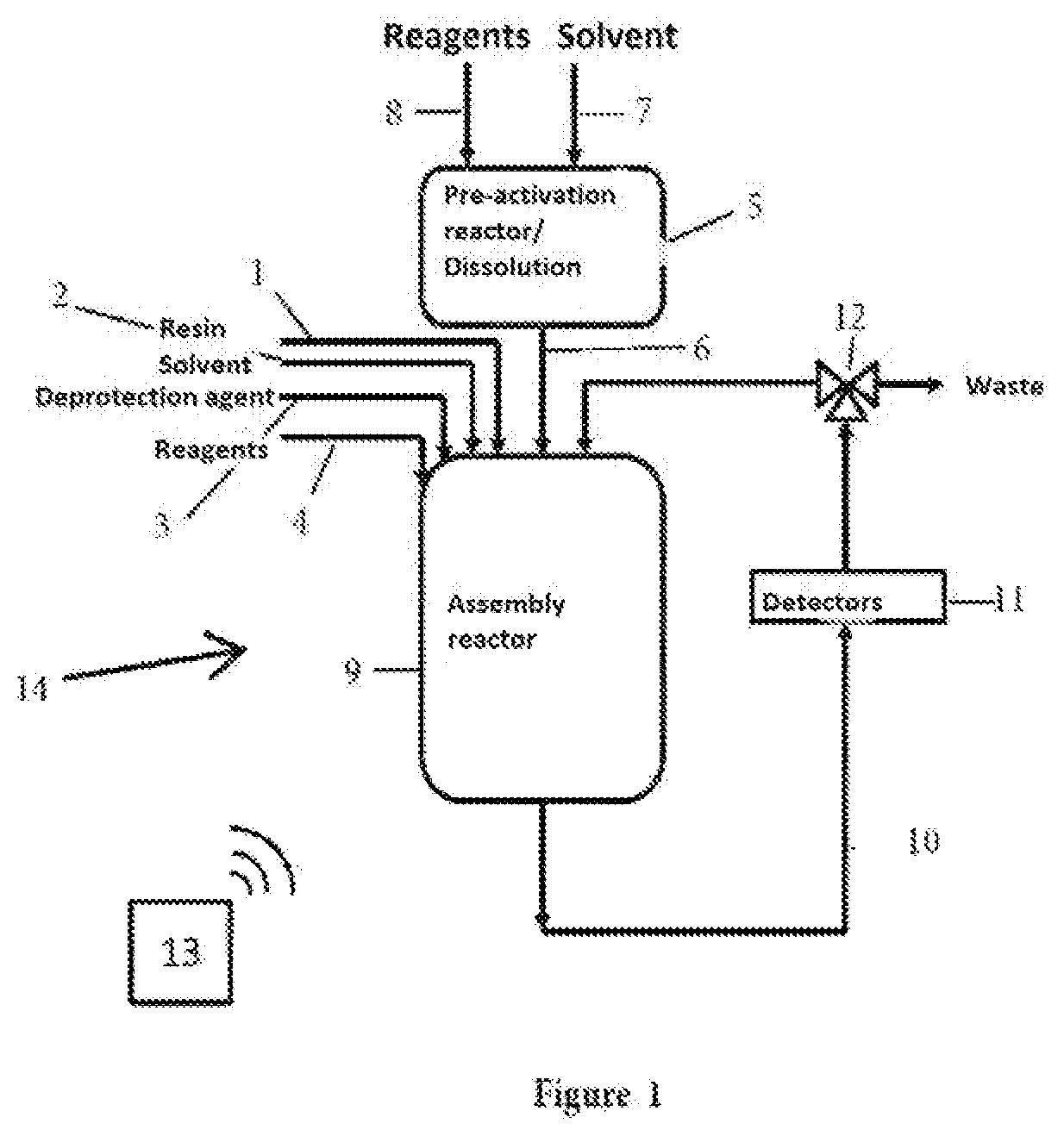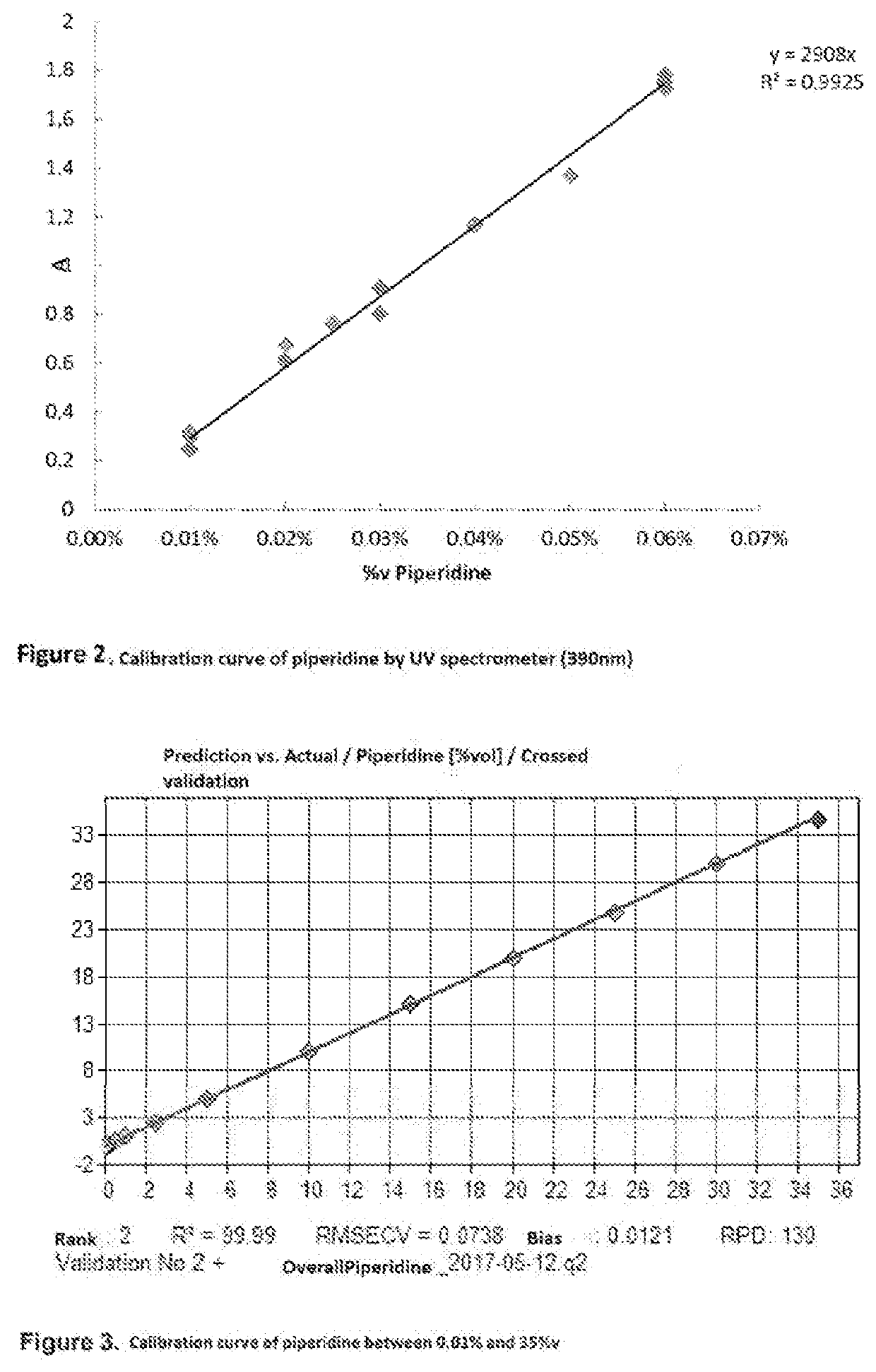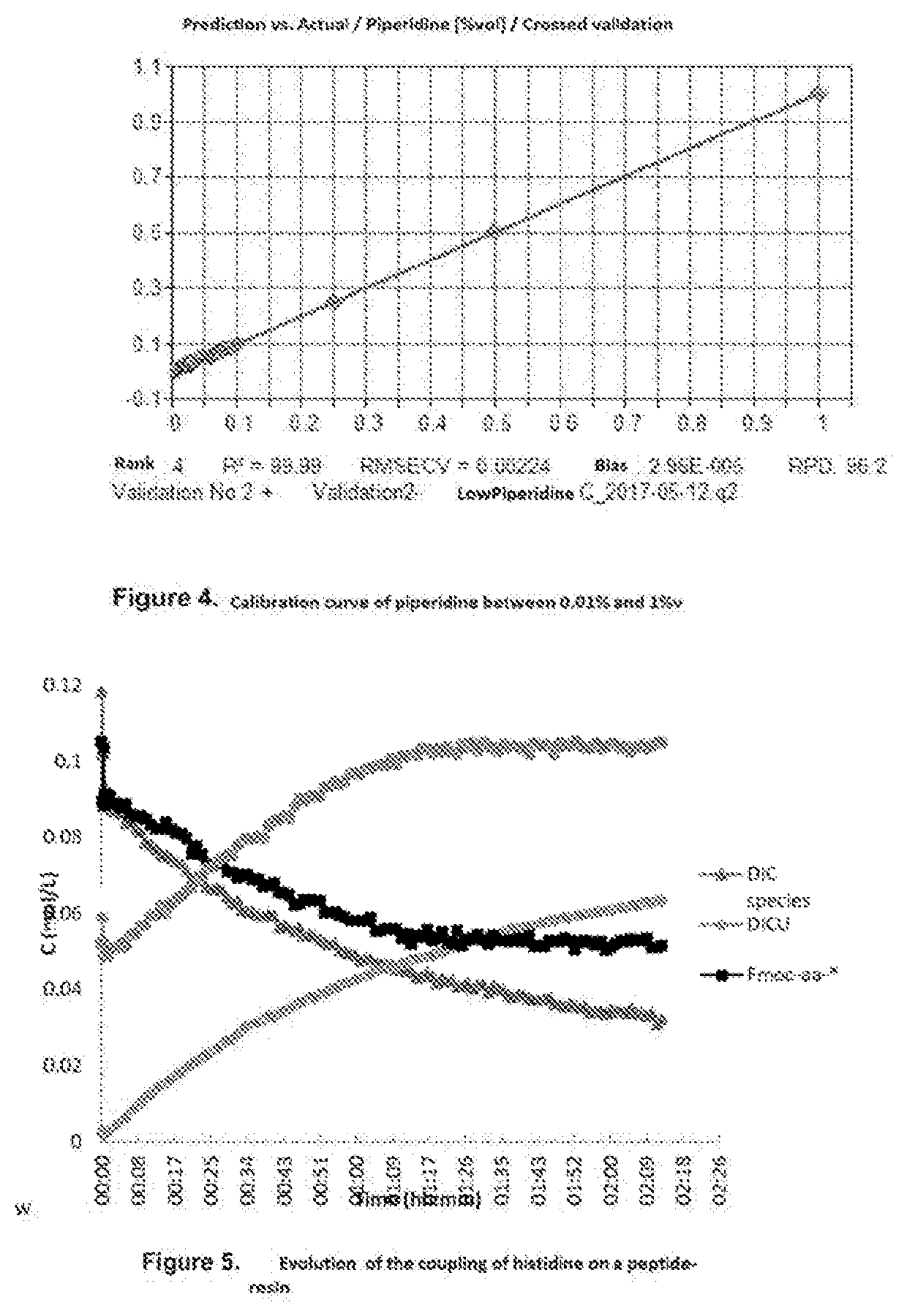Automated synthesis reactor system with a recirculation loop
a reactor system and automatic technology, applied in the direction of peptides, instruments, organic chemistry, etc., can solve the problems of not being satisfactory for purposes of understanding phenomena, unable to achieve mass spectroscopy determination of peptide products, and reducing the quantity of reagents, reducing the amount of reagents, and reducing the amount of solvents
- Summary
- Abstract
- Description
- Claims
- Application Information
AI Technical Summary
Benefits of technology
Problems solved by technology
Method used
Image
Examples
example 1
Operation of the Installation
[0093]During a solid-phase synthesis, this starts by introducing the resin into the reactor via the dedicated inlet. A predefined volume of synthesis solvent is added at a predefined flow rate via the dedicated inlet. The resin-solvent mixture is stirred, then, once the resin is inflated, the solvent is drained via the outlet at the reactor bottom. The operation is restarted several times. At the same time, the amino acid or the linker is dissolved / or pre-activated in the dissolution reactor in the DMF. This is stirred. Either the coupling agent is added or not. If so, the pre-activation step is followed, preferably thanks to a conductivity cell.
[0094]Once the pre-activation is finished, the mixture is introduced in the assembly reactor. The stirring is started in the assembly reactor and the recirculation loop is started. The infrared measuring in the recirculation loop enables to quantify the chemical species of the mixture. The concentration of the re...
PUM
| Property | Measurement | Unit |
|---|---|---|
| Volume | aaaaa | aaaaa |
| Volume | aaaaa | aaaaa |
| Volume | aaaaa | aaaaa |
Abstract
Description
Claims
Application Information
 Login to View More
Login to View More - R&D
- Intellectual Property
- Life Sciences
- Materials
- Tech Scout
- Unparalleled Data Quality
- Higher Quality Content
- 60% Fewer Hallucinations
Browse by: Latest US Patents, China's latest patents, Technical Efficacy Thesaurus, Application Domain, Technology Topic, Popular Technical Reports.
© 2025 PatSnap. All rights reserved.Legal|Privacy policy|Modern Slavery Act Transparency Statement|Sitemap|About US| Contact US: help@patsnap.com



